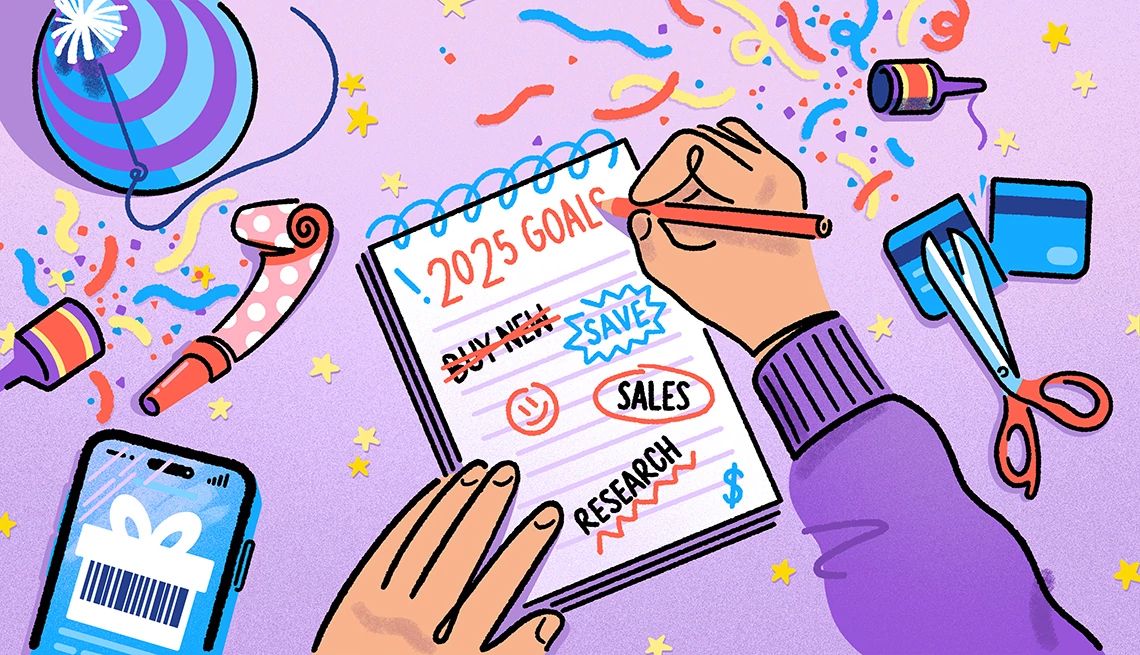AARP Hearing Center


When it comes to shopping, one of my mantras is “Never buy anything until you’re sure you can’t get it for less.”
But I slip up occasionally. So I decided to turn my bloopers into New Year’s resolutions. Here are six steps you can take to avoid the money-wasting mistakes that I made this past year.
1. Use more digital coupons
I can be a lazy couponer when it comes to food. I miss paper coupons! But grocery-store apps are easy to use. Tap on the coupons you want and then scan a barcode in the app at checkout. Or head to Coupons.com for printable coupons. To supercharge your savings, try cash-back apps like Ibotta and Checkout51. Also, sign up for store newsletters and check your email inbox on Fridays, when retailers release the most coupons, according to a SimplyCodes survey.
2. Kick the sale habit
Sometimes when I see a hot coupon or a sale sign, I go berserk. After receiving a 30-percent-off coupon from a drugstore recently, I went on a cosmetics shopping spree. But I didn’t need most items, and some weren’t even bargains. Instead of jumping at a deal, first verify that it’s actually worthwhile.
3. Buy used
It’s better for my budget and the planet. And the many apps and sites dedicated to pre-owned products (Poshmark, ThredUp, Mercari) make it easier. Big retailers also sell used products. Just be sure to read descriptions, reviews and return policies carefully; when buying electronics, look for certified refurbished items.
4. Slow down
I sometimes get antsy and pull the trigger on purchases too early. I know I should wait for big sales, but I want it now! What restrains me is price trackers. They show product price histories, which help gauge whether the current one is high or low. For Amazon purchases, I use the CamelCamelCamel website and the BigBangPrice app. I also love the Honey browser extension’s Droplist feature, which works on Amazon and other websites, such as those of Target, Walmart and Macy’s.
5. Do the homework
Friends often ask me about deals hawked by no-name sellers, usually on social media feeds and online marketplaces — both notorious hangouts for scammers. I tell them to check for complaints, read reviews, and look for a company website with contact information and a return policy. But recently I pounced on a deal ($100 off!) without doing my homework. Later, I found many red flags, including an “F” grade from the Better Business Bureau and a blank profile for the company’s president on LinkedIn. With a lot of calls and a little luck, I managed to cancel my order. Whew!
6. Say no to store credit cards
I used to collect them like baseball cards. They tempt you with discounts, rewards and special coupons. But they can also ding your credit score and rack up huge interest payments. Average store-card interest rates jumped to a record 30.45 percent this year, reports Bankrate.com, with many cards charging at least 35 percent. That’s far higher than the average credit card rate of 20.37 percent at the beginning of December.

































































You Might Also Like
Why I Socked Away Over $500,000 in a ‘Layoff Fund’
Building a financial cushion was a game changer. Here’s how I did it
The Rudest Things Shoppers Do at the Grocery Store
Phone calls at checkout, knocking into other shoppers: Don’t commit these supermarket sins
Take These 7 Money Rules with a Grain of Salt
Some financial advice may sound right on the surface but could do you harm